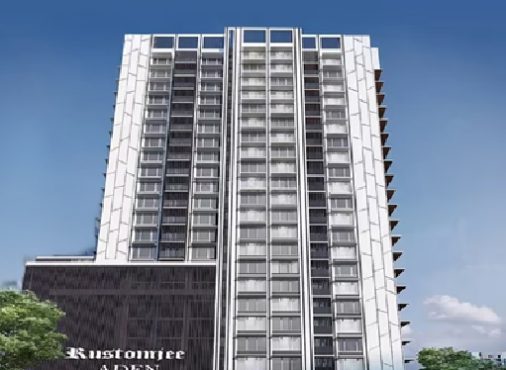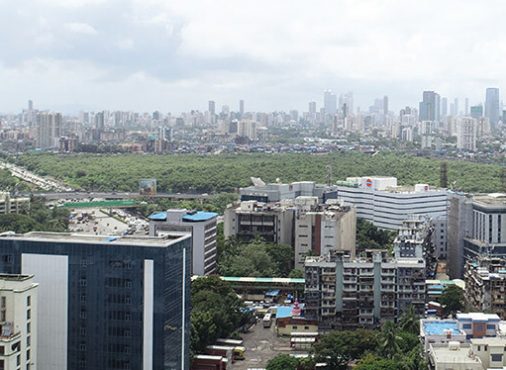Land has been a tried-and-tested way to create wealth for centuries. It has adapted to changing times and investor preferences. Several trends will redefine this ancient asset class in the next ten years. Sustainability, technology, and changing population needs are all playing out in the market with more people looking for green, smart spaces, creating new opportunities for investors.
Want to see what’s next? Step into the future with Rustomjee Belle Vie, where luxury meets sustainability. For now, learn extensively about land investment trends and make the right decisions gradually!
From Past Trends to Present Innovations
While the 20th century was all about industrial growth and urban sprawl, the 21st century is about sustainability, smart technology, and lifestyle integration. Developers like Rustomjee Belle Vie and Rustomjee Kasara are pioneers in meeting these demands with projects designed for modern living.
Economic Factors Shaping Future Trends
Global economic trends like inflation, changing trade dynamics and currency fluctuations impact land investments. For instance,
- Currency depreciation: Makes land more attractive to foreign investors.
- Inflationary hedge: Land is a preferred investment during periods of rising inflation.
Rustomjee Belle Vie is a reflection of the growing demand for luxury real estate among domestic and international investors. This is a shift in preference towards properties that offer exclusivity, security and community amenities.
| Economic Driver | Impact on Land |
| Inflation | Tangible assets in demand. |
| Globalisation | Foreign investors are looking at premium properties. |
| Interest Rates | Higher rates will reduce borrowing and demand. |
| Urbanisation | Land demand in developing cities and suburbs. |
| Technology | Digital tools making land evaluation easier. |
| Government Policies | Regulations and incentives driving investment. |
| Supply Chain Disruptions | Land near infrastructure in demand. |
Read Also: The Future of Smart Luxury Homes in India: What NRIs Should Look For
Investing in a Greener Future
Sustainability is now a key driver of future land investment trends. Developers are now incorporating energy-efficient designs, water conservation systems and renewable energy sources in projects.
Rustomjee Kasara townships are all about eco-living and setting new benchmarks for sustainable urban living. The rising sea levels and natural disasters are impacting property values in coastal and vulnerable areas. As a result, inland properties with resilient infrastructure are in demand.
| Sustainability Factor | Example |
| Green Buildings | Rustomjee’s projects with solar energy. |
| Eco-friendly Materials | Reduced carbon footprint in construction. |
| Water Conservation | Rainwater harvesting systems in residential areas. |
| Energy Efficiency | Smart home technologies to reduce energy consumption. |
| Sustainable Landscaping | Use of native plants and drought-tolerant greenery in developments. |
Urbanisation and Smart Cities
Smart cities are redefining urban development, making spaces efficient, sustainable and tech-enabled. These cities use IoT, AI and big data to optimise energy, transportation and waste management. This action leads to higher property demand and value.
Bandra Kurla Complex (BKC): A Case of Urban Evolution
BKC is an example of how smart cities can create an ecosystem that attracts businesses and investors. Proximity to such hubs increases property prices of surrounding projects like Rustomjee Belle Vie.
Technology’s Role in Land Investment Trends
AI, blockchain and virtual tours make land transactions more accessible to investors now. Here’s how.
| Tech Innovation | Benefit |
| Blockchain |
|
| Virtual Property Tours |
|
| AI-powered Platforms |
|
| Smart Homes |
|
Investment Hotspots of Tomorrow
Suburban areas around major cities are in demand as people shift to bigger homes, greener spaces and better connectivity. Investors are taking notice as these areas offer affordability and growth easily.
Another reason investment hotspots are coming up is the development of smart cities. These cities built with modern technology and sustainability in mind will offer a high quality of life with world-class infrastructure.
As governments and private developers invest in creating these hubs, areas like Navi Mumbai and Bengaluru suburbs are already attracting investors looking for future-proof properties. Digital services, green spaces and advanced utilities are coming together in these areas.
On the contrary, smaller cities and towns along economic corridors are expected to see a lot of investment action. With better connectivity and regional economic development initiatives, towns like Kasara and other parts of Maharashtra are poised to become hotspots for both residential and commercial investments in the next decade.
Demographic Shifts and Demand
With changing age groups, migration patterns and lifestyle preferences new opportunities are emerging in real estate. Here’s a glimpse:
- Ageing Population: With the elderly population growing, there is a demand for age-friendly housing, assisted living and healthcare-focused real estate.
- Millennial Buyers: Millennials, now in their prime buying years, are driving demand for modern homes with smart features and proximity to urban amenities.
- Gen Z’s Housing Preferences: As Gen Z enters the housing market, there’s a preference for affordable and flexible living spaces, often in suburban or smaller cities close to remote work hubs.
- Urban Migration: Young professionals continue to move to cities for jobs contributing to increased demand for urban apartments and commercial spaces in metro areas.
- Rural to Urban: Many are moving from rural areas to urban centres for better healthcare, education and employment opportunities, and therefore, city real estate values will go up.
- Multi-generational Living: The rise of multi-generational households is driving demand for larger homes with flexible living spaces and extra space for extended families.
- Expatriate Communities: The increasing number of ex-pats and foreign workers is proportional to the demand for rental properties.
- Lifestyle Shift: The need for sustainable, energy-efficient and spacious homes with proximity to nature is a must-have, especially in suburban and semi-rural areas.
Regulatory Changes in Mumbai
Mumbai, one of the most happening and in-demand real estate markets of India, is governed by many regulatory factors that an investor needs to come to terms with. Here are some key regulatory aspects of Mumbai’s land market:
-
- Development Control Regulations (DCR): Mumbai’s DCR governs land use, density and type of development permissible in different areas. Land developers and investors need to stay updated on the changes that can open up or close new opportunities.
- Land Ceiling Act: The Maharashtra Agricultural Land (Ceiling) Act restricts the amount of agricultural land that can be held by a single entity or individual. Investors need to comply before converting agricultural land to residential or commercial use.
- Floor Space Index (FSI) and TDR: Over the years, FSI has been relaxed in some areas to promote high-rise buildings. TDR (Transferable Development Rights) allows developers to buy or sell development rights, which impacts land value and investment opportunities.
- Slum Rehabilitation and Redevelopment: Mumbai’s slum rehabilitation policy allows developers to redevelop slums in exchange for Floor Space Index (FSI) benefits.
- Environmental Regulations: Coastal Regulation Zone (CRZ) rules restrict development in certain coastal areas, which can restrict land acquisition for commercial and residential projects.
- Stamp Duty and Registration: Like other cities in India, Mumbai has stamp duty on property transactions which ranges from 4-7% depending on the type of transaction and location. Registration is also mandatory and investors need to consider these costs while planning their finances.
- Mumbai’s Redevelopment Projects: The city is going through major redevelopment projects like the Eastern Freeway, Mumbai Coastal Road Project and new metro lines.
- RERA Compliance: The Real Estate (Regulation and Development) Act or RERA mandates that all projects should be registered and developers should provide clear timelines for project completion.
Read Also: Common Mistakes NRIs Make When Purchasing Property in India
Investment Strategies for the Future
Here are five strategies to future-proof land investment:
- Portfolio Diversification Across Geographies: Spread your investments across urban, suburban and emerging areas to balance risk. Diversified locations ensure the entire portfolio does not suffer a risky fate if a specific area is down.
- Market Cycles: Invest early in developing areas to get higher appreciation. In mature areas, expect stability and steady returns but with slower growth.
- Focus on Sustainable Developments: Sustainability is becoming a big pull for both investors and buyers. Invest in green buildings or eco-friendly projects that meet the rising environmental standards.
- Technology in Investment Decisions: Use data-driven tools like AI and blockchain to evaluate land and predict trends. These tools bring transparency and accuracy in decision-making.
- Long-term for High-Yield Areas: Target areas that are seeing infrastructural growth or government-backed urban renewal projects. These areas may take time to appreciate but will provide long-term gains as demand increases.
So, are you thinking of buying land or villa plots? Rustomjee Belle Vie is the best option, offering breathtaking views of the Sahyadri Range. Contact Rustomjee today and fulfil your dream of land investment.
FAQs
- How does climate change impact land investments?
Climate change is making investors focus on inland areas with climate-resilient infrastructure. Areas less prone to natural disasters will see more demand in upcoming times.
- How will smart cities impact land values?
Smart cities, with their advanced infrastructure and sustainable solutions, are poised to drive up land values in surrounding areas due to increased demand and enhanced livability.
- What new regulations might affect land investment?
Regulations favouring green development and simplifying tax laws can significantly impact the land investment market by attracting environmentally conscious investors and reducing financial burdens for developers, thereby boosting overall market activity.





